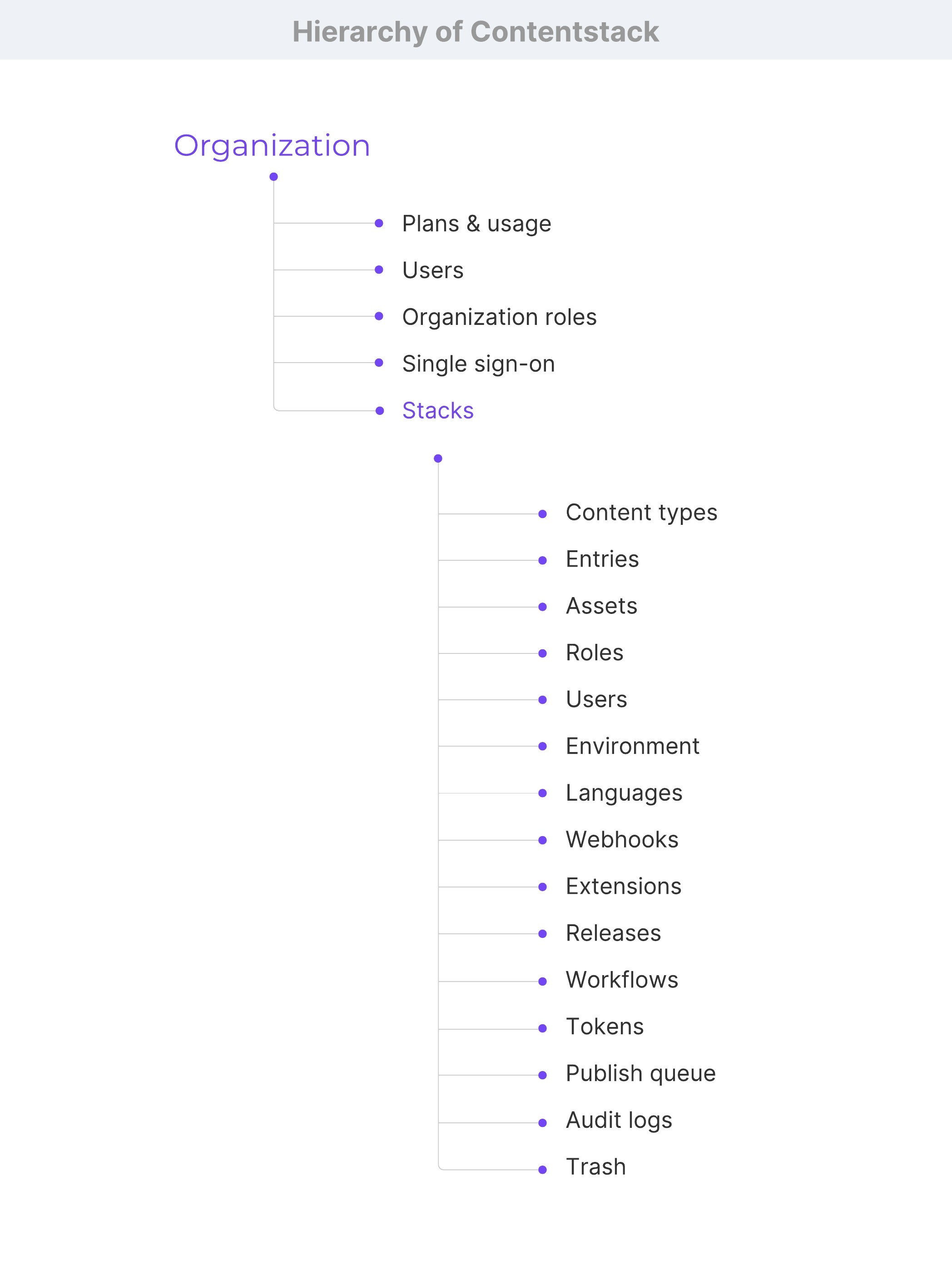Was this article helpful?
Thanks for your feedback![]()
Learn about the hierarchy of entities and the key concepts of Contentstack.

Organization acts as a parent entity that encapsulates stacks (and all the resources stored within), belonging to the same company or group making project management unbelievably easy.
Learn more about Organizations.
A stack is a container that holds all the content (entries) and assets related to a site. It also serves as a collaboration space where multiple users can work together to create, edit, approve and publish content.
Learn more about Stacks.
Branches allow you to create multiple copies of your stack content. Changes can be made within different branches without affecting the main branch.
Learn more about Branches.
Note: The term module (used across our documentation in general and in Branches-related documentation in particular) is used to refer to a part, component, or feature of Contentstack. It is not a feature or a component in itself.
Content type lets you define the structure or blueprint of a page or a section of your digital property. It helps you lay the foundation of your content.
Learn more about Content Types.
An entry is the actual piece of content created using one of the defined content types. To create an entry, content managers simply fill data in the fields of a content type.
Learn more about Entries.
Assets refer to all the media files (images, videos, PDFs, audio files, and so on) uploaded to Contentstack. These files can be used in multiple entries.
Learn more about Assets.
A collection of permissions that are applicable to all the users is called a Role. Using Roles, stack Owners or Admins can set specific permissions to each user.
Learn more about Roles.
A user is any member who is able to access a particular stack in an organization.
Learn more about Users.
A publishing environment corresponds to one or more deployment servers or a content delivery destination where the entries need to be published.
Learn more about Environments.
Contentstack offers multilingual support, which allows you to create entries in any language of your choice. Localization is the process of making an entry available in another language.
Learn more about Localization.
In Contentstack, a user-defined HTTP callback is called a Webhook. It is an automated system that sends real-time information to third-party apps or services.
Learn more about Webhooks.
Contentstack provides its users with pre-built, ready to use, extensions to be used in content types. These can be selected from the Extensions list.
Learn more about Extensions.
Releases are a set of entries and assets that can be deployed(published or unpublished) all at once in a specific environment.
Learn more about Releases.
An order of steps that define the roadmap in a process is called as a Workflow in Contentstack.
Learn more about Workflows.
Contentstack has Access Tokens, Delivery Tokens, Management Tokens, and Authtokens. These tokens are required to authorize API calls.
Learn more about Tokens.
An entry or asset that a Content Manager sends for publishing or unpublishing, the system puts the action into a publish queue. The stack user can view the status of these tasks in the Publish queue section.
Learn more about Publish queue.
All events and activities that take place in a particular stack are recorded and displayed in the Audit log. This helps the user keep a track of all items that are published, updated, deleted and the current status of the existing content.
Learn more about Audit logs.
All deleted items in Contentstack for a particular stack are stored in the Trash for a limited period of time.
Learn more about Trash.
Was this article helpful?
Thanks for your feedback![]()